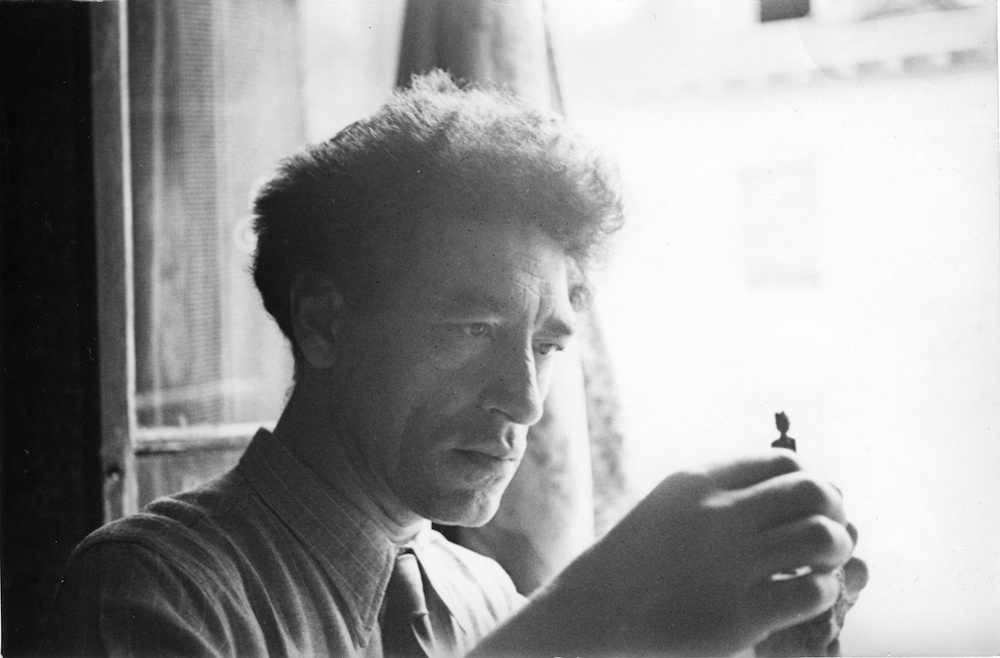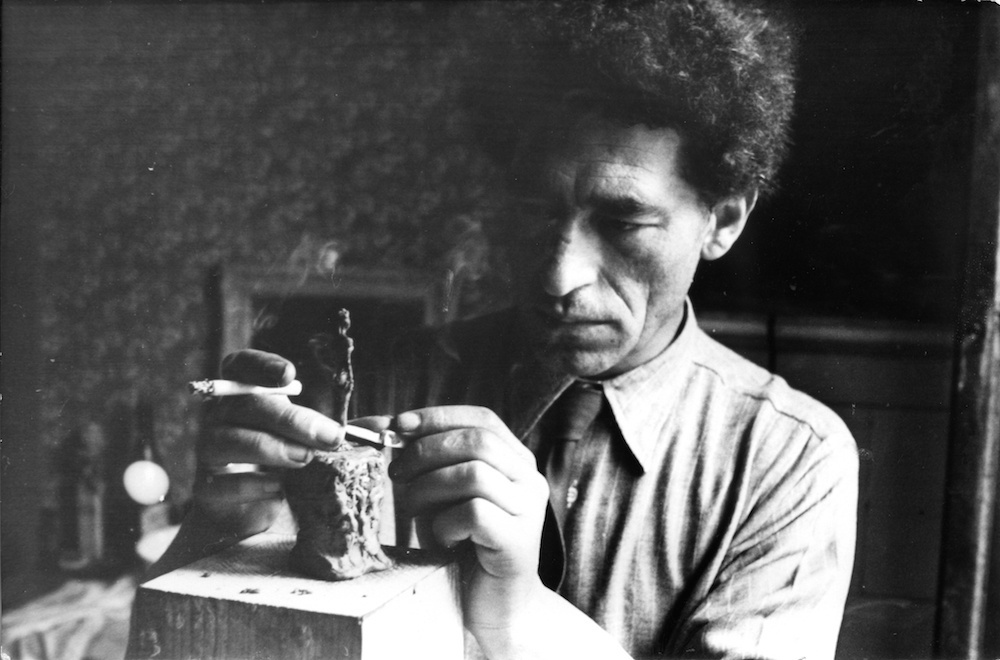ART-PREVIEW:Alberto Giacometti-Sculptures 1935/45
 A preeminent artist of the 20th Century, Alberto Giacometti investigated the human figure for more than forty years. Giacometti was born in the Swiss village of Borgonovo. His father, Giovanni, a recognized Post-Impressionist painter, introduced him to painting and sculpture at a young age. Giacometti moved to Paris in 1922 and eventually settled in a 15-by-16-foot studio in the artists’ quarter of Montparnasse. He produced the greater part of his oeuvre in this tiny space, which he maintained until the end of his life.
A preeminent artist of the 20th Century, Alberto Giacometti investigated the human figure for more than forty years. Giacometti was born in the Swiss village of Borgonovo. His father, Giovanni, a recognized Post-Impressionist painter, introduced him to painting and sculpture at a young age. Giacometti moved to Paris in 1922 and eventually settled in a 15-by-16-foot studio in the artists’ quarter of Montparnasse. He produced the greater part of his oeuvre in this tiny space, which he maintained until the end of his life.
By Dimitris Lempesis
Photo: Luxembourg & Dayan Gallery Archive
The exhibition “Intimate Immensity: Alberto Giacometti Sculptures, 1935-1945” is dedicated exclusively to the artist’s cycle of very small human figures created in France and Switzerland during the World War II. Evolving against a backdrop of unprecedented socio-political upheaval, this unique body of work represents a profoundly transformative phase of Giacometti’s career: at no more than 8 cm tall and as thin as nails, these works reveal the path that led the artist to the elongated figures for which he became famous in the final two decades of his life. The exhibition draws its title from a passage in Gaston Bachelard’s philosophical treatise, “The Poetics of Space” (1958), a meditation upon the ways in which private domestic space can become a limitless universe of psychological experience and creative discovery. Giacometti’s sculptures from this period express a sentiment of infinite regression, one in which reality is constantly pulling away and can be seen only from a distance. That sentiment took form through a gradual process in which Giacometti reduced his sculptures and diminished their size. Frustrated by his inability to find the correct sculptural expression for his thoughts, impressions, and feelings, the artist wrote in 1948 to Pierre Matisse, his art dealer in New York, “Wanting to create from memory what I had seen myself, the sculptures gradually became smaller and smaller, bearing resemblance only when they were small… Often they became so very small that with one touch from my knife they vanished into dust”. Giacometti arrived in Paris in 1922 to study under the classically inspired sculptor Antoine Bourdelle, but his discovery of the innovative work of Constantin Brancusi, Henri Laurens, Jacques Lipchitz, and Pablo Picasso soon led him to put aside traditional training. He appropriated Cubism’s principles of geometric construction to develop a personal formal vocabulary. Giacometti also pursued the investigation of language and dreams promoted by the Surrealists, who were led by the French poet and writer André Breton. He associated with the so-called dissidents who gathered around the French intellectual and writer Georges Bataille, and in 1930, he became an official member of the Surrealist group. Giacometti continued to make his “object-sculptures,” as he called them, until 1934, many of which verge on abstraction while maintaining a connection with figuration. In 1935 Giacometti distanced himself from the Surrealist movement and its emphasis on the unconscious, and he returned to working from the live model. His brother Diego posed for him every day while the sculptor explored various techniques, eventually beginning to experiment with an expressive manner that would develop into his mature style. Giacometti’s interest in depicting the human form was also evident in his painting, a medium he took up again following a hiatus of a few years. The German army marched into France in May 1940 and occupied Paris by June. In late December of the following year, Giacometti traveled to Geneva to visit his mother and was unexpectedly denied permission to reenter France. Diego maintained the Paris studio while Giacometti stayed in Geneva, living and working in a hotel room. There, he continued to reduce the size of his plaster sculptures, scraping them down to a height of mere inches. Many of these diminutive works are busts or female figures standing on massive bases, the latter inspired by his memory of the silhouette of a woman observed from a distance on the street. Other figures represent Giacometti’s young nephew Silvio, who posed for the artist. These miniaturized forms may be read as either an exploration of perception—that is, how one reads distance and scale—or a consequence of his compulsion for reworking and reducing his figures during this uncertain period of dislocation. With the end of World War II in September 1945, Giacometti was free to return to Paris. In his studio at 46, rue Hippolyte-Maindron, he embarked upon the most productive period of his career.
Info: Curator: Casimiro Di Crescenzo, Luxembourg & Dayan Gallery, 64 East 77 Street, New York, Duration: 12/11-15/12/18, Days & Hours: Tue-Sat 10:00-17:00, www.luxembourgdayan.com



